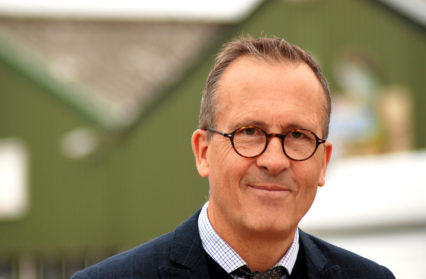Artist Gregory Hayman has been visiting the Dyfi Valley for years, and recently pulled off a seismic shift in his life. Six months ago, this sought-after, city-based communications expert moved to a remote and beautiful valley in the wilds of Snowdonia National Park. He has worked with the great and the good of the media world, was the Mayor of Cromer, Norfolk, and was caught in the horror of a devastated New York when the Twin Towers came down. But now he wants to settle into the landscape and concentrate on his art.
His new home needs work, and he is currently rescuing the garden from a tangled wilderness of bramble. I persuaded him to take off the thorn-proof gloves and talk about his art and his inspirations.
Do you have a ‘day job’ as well as being an artist? How do they fit together?
Art doesn’t pay, and in fact it costs me money as it does many other early career artists. Artists have always had to live by doing other forms of work to enable them to live. What I appreciate from my time at art school is that artists are of necessity, very versatile – hey can turn their hand to many things. And in fact I understand that art graduates are one of the most highly employed sections of the graduate population. I know that all my colleagues who graduated at the same time as me are in work. So, since graduating I have been running a museum, working for the NHS and local government as well as doing freelance PR. I am a communicator and art is about communication and I think that the idea that people have a conversation with an artwork underpins how I approach my work.
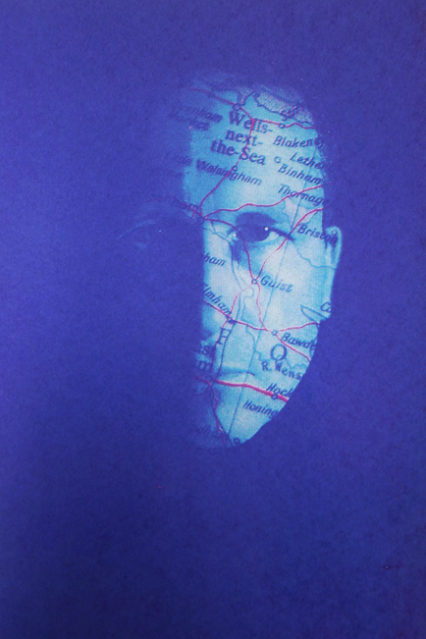 Give us a short, rough guide to your life so far?
Give us a short, rough guide to your life so far?
I have been very lucky having worked in the media, for BBC ITV and Sky News, and to have worked through some of the most dramatic events in the past 40 years. That gave me the opportunity to work with some of the biggest names in entertainment and politics. I then worked for government projects like the Millennium Dome and the National Lottery, before moving onto the British Library and Cambridge University (which was my last full time job before starting my degree in fine art). I have enjoyed those times enormously but I find art more spiritually nourishing and realise that a lot of media is rather transitory.
What medium(s) do you work in?
The mediums change over time, I have mostly worked in print making, sculpture and video art. I am currently most engaged in video art and this has been most ‘successful’ in terms of being exhibited.
Why does video appeal?
Video is appealing because it is easy to share with greater numbers of people; I like the ability to be able to use image and sound to explore an idea, or to tell a story.
What is your subject matter?
I am very interested in art history and having a contemporary discussion around important artworks. I am also interested in memory and forgetting and not forgetting and trauma. Several my artworks have been about the Holocaust. I believe we must never forget how that occurred and how a regime or political philosophy could marginalise, demonise then decimate a population while people did nothing to stop it.
Is your work autobiographical?
No my work is not consciously autobiographical, although of course my work comes from me and my interests and experience. The themes relate to my political interests, my philosophical interests, to history and religion, to art and art history and to the people who have engaged in those works. My work is about ideas. From ideas spring conversation and discussion.
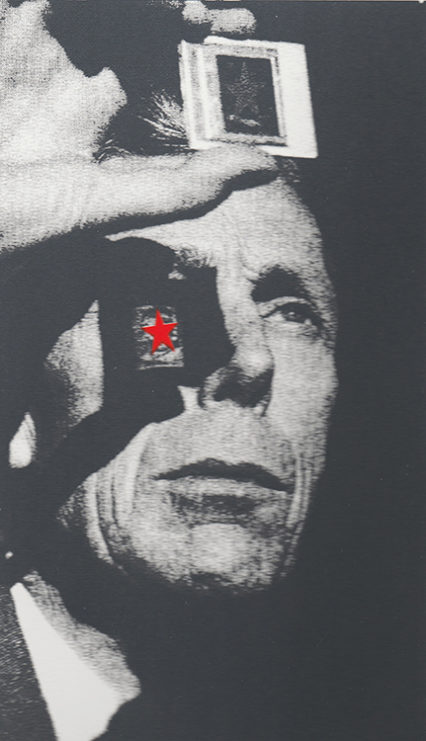 Tell me about the Anthony Blunt project
Tell me about the Anthony Blunt project
I am interested in spying and the trade in information. For my work on the art historian and soviet spy Anthony Blunt, I interviewed former colleagues and probable spies, I have also worked with people who have been ‘seconded’ to GCHQ for work.
Walk me through one of your favourite works.
Like with children, I don’t really have favourites! They come from me at a certain moment in time, they might be formed in the crucible of passion, obsession, chance encounter, etc. I’m proud of I love you like Salt which as an artwork was just a set of instructions which I sent to an artist in New Zealand to execute. I’d done a lot of thinking and research about the idea, which stems from King Lear, which itself is based on a series of stories and parables which are common across the globe. Salt has had the biggest number of views of any of my artworks, currently over 120,000 views. I’m overwhelmed that so many people have found their way to it. My artwork Dog, is my most widely exhibited work to date in formal exhibitions from Newcastle to Berlin, Athens to Taiwan.
What are you reading / listening to/ looking at this year?
I am reading detective fiction by the bucket load from the middle part of the last century – the so-called ‘golden age’ of crime fiction; I particularly love the British Library reprints of these crime classics. I also love contemporary fiction and adored the first two books by Sally Rooney, and I can’t wait to get my hands on the new Hilary Mantel. I tend to read about 2 books a month. I intersperse that reading with spy novels and lighten the reading with some good theory books.
Listening wise, my tastes are very catholic, it depends on my mood, the time of the year etc. I prefer early music to orchestral, but then I love opera and ballet. Pop wise I listen to a lot of vintage pop but I also like Lilly Allen, George Ezra, Snow Patrol, Cold Play and Radio Head. When I’m not listening to that I love folk – just about anything.
Whose art work are you excited by?
There are so many wonderful contemporary artists but top of my list are probably Miroslaw Balka (a Polish artist), Phyllida Barlow, Martin Creed, and Laure Prouvost. From the past almost anyone, but Picasso, Titian, Velasquez, Goya, Rembrandt and Duncan Grant (one of the Bloomsbury Group) rank highly.
Where do you work? Do you have a studio?
Because my work stems from ideas, I can work almost anywhere. When it comes to turning an idea into an artwork, it’s usually in a bedroom at home where I have the video editing software installed on a computer that I only really use for art making. I had a studio away from home for a while but I found it soulless and it didn’t inspire me to work. Obviously, my filming often takes place somewhere else – unless works are entirely digitally born like Dog. If I’m printmaking then I need to go to a place that has the equipment to make prints, and for sculptural works I can do these at home – usually outside if I’m going to make a mess. Technical things, like casting in bronze, need a visit to a workshop. Because my artworks are often research heavy, then they are often ‘made’ in libraries and archives or visits to galleries and museums.
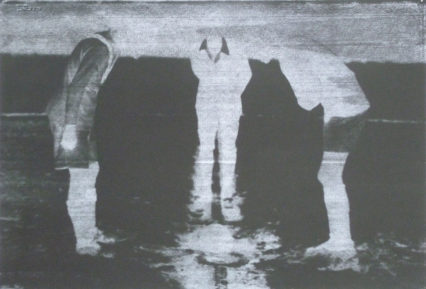 What do you want the viewer to see / feel when they engage with your work?
What do you want the viewer to see / feel when they engage with your work?
I want them to see what they want to see – I don’t want them to be directed into finding a particular meaning with most works. That’s why I often keep titles of works obscure – people can bring their own meaning. However some works are more narrative and easier to read. I don’t like to direct people with my work. I often eschew giving my work titles, instead I give them a number. People bring themselves to an artwork, so I prefer to leave them to make of it what they will. Artworks are like having children, you try to give them the best start in life, but ultimately you must let them forge their own place in the world. That letting go is both terrifying and exciting. I don’t want to control how my works live without me.
You entered University as a mature student, gaining a First and then on to a Masters with distinction. Tell us about moving to education later in life?
There was no downside to studying art as a mature student – every moment of the 5 years of study was wonderful and I’d do it again at the drop of a hat! What I did learn was that art students probably work harder than students of almost any other subject. I have tons of written work from my studies which we had to do as well as making and exhibiting art. I have done academic degrees before these ones and they were far easier!
What advice would you give to aspiring young artists wondering about heading to college or University. It’s an expensive game these days, isn’t it?
A fine art degree makes you tremendously resourceful and it’s going to be hard work, but it is going to be hugely rewarding too. I would recommend anyone of any age to head to university – you will never regret it. I’m tempted to do a PHD and would probably have done one in the EU if we hadn’t left.
Yes a degree is expensive, and should be free to study, like in Scotland, but it’s an investment in your future and while it costs money, paying out for it does focus students’ minds on getting the most for the money by working hard.
I’m an artist first and foremost nowadays, maybe always, but I didn’t always have the knowledge, belief, skills (if I have any) and intellectual understanding that I have as a result of studying fine art formally at degree and post graduate level.
Studying fine art changed my way of thinking. I believe it completely rewired my brain. I am much more chilled now than I ever was before.
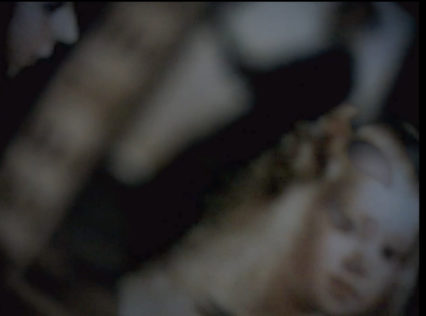 What brought you to Wales?
What brought you to Wales?
Wales is amazing, the rhythms of life, the ability to experience real solitude, and conversely to receive a warm welcome are things that drew me here. Where I’m living near Machynlleth is just a wonderful spot. The art scene in Machynlleth and Newtown is very inspiring. The terrific bread you can get is also important! Good Sourdough is so much easier to get than in other places.
What are your plans now that you’re here?
I want to make art that draws on my time here. I also want to begin learning Welsh and maybe make video artworks in Welsh.
What do you know about the Welsh arts scene?
It does appear to be very vibrant and there are great things happening. In Fine Art I really admire the work of Bedwyr Williams who I was lucky enough to meet while he was an artist in residence in Cambridge. I’m also looking forward to exploring the folk music scene. One of the things which strikes me (and I noticed it in Scotland too when I lived there), is that there is tremendous support and appreciation of artists who live and work here. People know about their artists here – there is a sense of pride which you just don’t find in England. It’s not a surprise that many of the Turner Prize nominees hail from Glasgow School of Art, the scene there is so vibrant and encouraged. I think the same could happen in Wales.
How do you see the Welsh landscape (physical and cultural) affecting your work or contributing to it?
I tend to internalise landscape. I’m interested in place and space or splace as I call it – locations or indices where things happen. I don’t imagine I will make artworks about landscapes, but rather ideas that are held in splaces or come from them.
What are you working on right now?
I’m working on a couple of pieces about Auschwitz that I filmed there last year. And a piece about chance or luck.
I should let you get back to the brambles – how is that going?
Doing physical manual work, like gardening or shifting tons of earth really helps clear and focus the mind. We had to do an exercise at art school of washing a bar of soap in a bowl of water for 2 hours – it is marvellously therapeutic, I can really recommend it!


